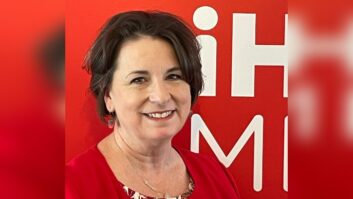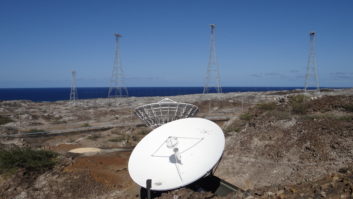What does the technical future look like for broadcasting a decade from now? How will broadcasting systems change over the next 10 years?
To provide insight on these questions, Radio World contacted several industry visionaries and technical leaders and asked their opinions about where radio is headed.
Their answers suggested that radio is in a cycle of change that will continue for the foreseeable future. Within this cycle are some wild-card technologies that could transform the radio industry into something quite different than it is today.
One thing on which our sources could agree is the continuing impact of digital technology on radio broadcasting. There has been a seemingly inexorable progress toward digital audio for the last 15 years, fueled by a revolution in computing that offers increases in power and flexibility at lower prices every year.
From the first CD player, to DAT and through to the “radio station on a hard drive” systems of today, digital techniques have moved into all aspects of audio storage and playback.
Now the industry appears poised on the edge of transforming radio transmission to digital channels as well. And the transition offers many possibilities.
Promise of digital
“Digital broadcasting holds the promise of exciting new ancillary services that can enhance the main program service, or launch entirely new revenue generating ancillary services,” according to Lynn Claudy, senior vice president of science and technology for the NAB.
Alan Stillwell, senior associate chief of the Office of Engineering and Technology at the FCC, agreed.
“We can expect to see the digital features offered by broadcasters increasing. With digital broadcasting it is possible to link pictures and text to the audio programming,” he said. “These elements will allow broadcasters to reach listeners and offer marketing tie-ins that we can only speculate about today.”
Applications for digital ancillary services are numerous. Beyond simply sending out artist and title information for a particular piece of music, stations could include interactive links, using a wireless back channel similar to a cell phone for listener responses. These would allow the listener to request more information and even download music for a fee.
Use of the ancillary data channel could include an electronic program guide, or EPG, which in turn would permit the use of time shifting by listeners, similar to the way a TiVo recorder works for television.
“With the ability to include metadata that identifies the associated audio, digital transmission could eventually eliminate the dependence on time-based programming,” said Mike Starling, vice president of engineering at National Public Radio.
“Listeners could also create ‘personalized radio,’ a blend of audio from different providers according to their own tastes,” he said. “Producers may begin to find that ‘chunking’ of program content offers distribution benefits over traditional continuous streaming and a viable business.”
Ancillary data also could permit paid subscription services to be delivered via radio along with the standard free programming supported by advertising.
Satellite radio
Accelerating the transition to digital transmission is the deployment of satellite radio services from XM Satellite Radio and Sirius Satellite Radio.
Satellite is able to offer a wider range of programming (100 channels) than is feasible for the conventional radio station or group.
“I feel that the most interesting trend right now is satellite-delivered pay radio because this provides the consumer with new content, the crucial factor for a new medium,” said Bob Orban, vice president and chief engineer of Orban/CRL Inc.
To survive, however, satellite radio will need to attract a relatively large number of people who are willing to pay every month for a service that has a long tradition of being offered for free.
“It is going to be very interesting to see how the mass market responds to this,” Orban said, “and whether XM and Sirius can get enough paying subscribers to reach critical mass.”
Local content at terrestrial broadcast stations likely will be affected by the advent of satellite radio.
“Program differentiation becomes Job No. 1 for radio stations responding to the competition – and that means emphasizing localism,” Starling said.
Orban agreed: “Nimble terrestrial broadcasters will compensate by emphasizing their localism and selling more local spots.”
Tech assists
The technology of computer networking and telecommunications networks will continue to be deployed by broadcasters as a way of reducing costs while offering customized programming to local audiences.
“The network and syndication model is sure to evolve,” said Steve Church, president of Telos Systems. “We’ll be seeing a lot more blending of live and recorded, local and network. Consolidation can only help this along, as the owners are constantly exploring ways to exploit the benefits of multiple station ownership.”
Following this trend, Church foresees greater use of packet-based audio networks.
“Traditional ISDN and AES/EBU transmission have very limited support for program associated data,” he said. “Audio broadcast technology has borrowed a lot over the years from telephony. Look to telephony again, where voice over Internet Protocol is now a billion-dollar-a-year business and growing.”
Along this same line, new products will need to be developed to handle the need for controlling more than audio information.
“We are now seeing the transformation of the audio console into a routing switcher. But there will need to be a way for these systems to also control program associated data, such as graphics that are synchronized with audio,” Starling said.
Church also expects that the science of digital signal processing will continue to affect broadcast products. “We’re not finished extracting innovative products from the ever-expanding capabilities and ever-lower prices of DSP-capable processors.”
IBOC’s time?
The experts also agreed that deployment of terrestrial in-band, on-channel digital audio broadcasting is pending.
“The time has come for the FCC to announce some fundamental decisions about digital terrestrial broadcasting, endorsing the IBOC approach to a digital future, adopting a technical standard based on the Ibiquity technology and setting the timetable for introduction of IBOC services,” said NAB’s Claudy.
Church said, “After many years, this technology is ready for prime time.”
Is the FCC ready to proceed?
“We are prepared to listen closely to the recommendations of the NRSC regarding IBOC,” said Stillwell. “After all the testing and system information is submitted, we will likely open this proposal to public comment as the first step toward a rulemaking.”
While some felt that IBOC faced challenges in deployment, all agreed that the advent of satellite radio will provide a significant impetus for broadcasters to go digital.
“XM and Sirius will provoke the terrestrial stations to get moving,” Church said.
IBOC also may instigate a new philosophy of audio processing that differs from that of conventional radio stations.
“It will be less desirable to drastically increase audio density by aggressive compression because the perceptual codec will have a difficult time finding bits to encode spectrally dense material. Audio processing will also need to avoid using peak limiting technologies, such as clipping, that introduce new spectrum that was not present in the source material,” said Orban.
Starling said, “The elimination of audio pre-emphasis under IBOC will affect the overall sound and IBOC audio processing.”
IBOC has been developed with the unique capability to provide an ancillary data stream from the start. Many felt this ancillary capacity would be a major force driving IBOC deployment.
“The IBOC data stream will become an important new revenue source for broadcasters,” states David Maxson, managing partner of Broadcast Signal Lab and a consultant to Impulse Radio, which is working with Ibiquity in developing a universal open standard for IBOC data.
“But it is important for us to develop a data protocol now that allows us to standardize on universal methods of delivering and generating revenue with IBOC,” Maxson said. “We don’t want IBOC data services fractured like today’s subcarrier services.”
There also is interest in the possibility of dividing up the IBOC data stream into two audio program channels for those broadcasters looking instantly to expand their capacity to serve additional audience.
“There may be an opportunity for public radio stations to offer classical music on their main channel and continuous news services on a secondary channel at somewhat lower fidelity,” Starling said.
Internet’s role
Finally, several of the interviewees predicted that the Internet, while undergoing a period of financial difficulty, would come back to play an important role.
“The Internet will return as a Big Deal,” said Church. “I don’t know exactly how this will play out, but the Net is important to audio entertainment. Look at how quickly people took to downloading and rotating the MP3s they exactly prefer.”
“I see Internet distribution of audio growing quickly,” Stillwell said. “Copyright issues will impact the eventual shape but adequate bandwidth is already available for audio content.”
Wireless Internet connectivity also could start to blend the role of the traditional broadcaster with that of the Webcaster.
“We are seeing a rapid increase in the number of people using wireless network connections over the 802.11 standard,” Starling said. “Although these networks are currently of limited range, the technology exists to extend them out to serve larger geographic areas.”
Church said, “Consider the growth of wireless Ethernet and the coming fast data rate mobile phones and you gotta know something interesting is going to come out of all this.”
The underlying technology trend is toward using digital techniques to control and transmit the audio programming that is the heart of radio. This trend has been in place for more than 15 years and will continue, although analog radio will likely remain a powerful force for some time.
Driving the conversion to digital are the enhanced control features and ancillary uses that it offers. Accelerating the change is an environment in which computer and networking technologies offer greater capacity at lower cost every year.
The radio industry appears on the verge of taking the final step and moving to wireless broadcasting of digital audio. How this turns out is impossible to predict, but expect the Internet and satellite radio, through competition and inspiration, to affect the ultimate shape of the radio industry.
Have a thought about the future of radio technology? Tell us via e-mail to [email protected]












